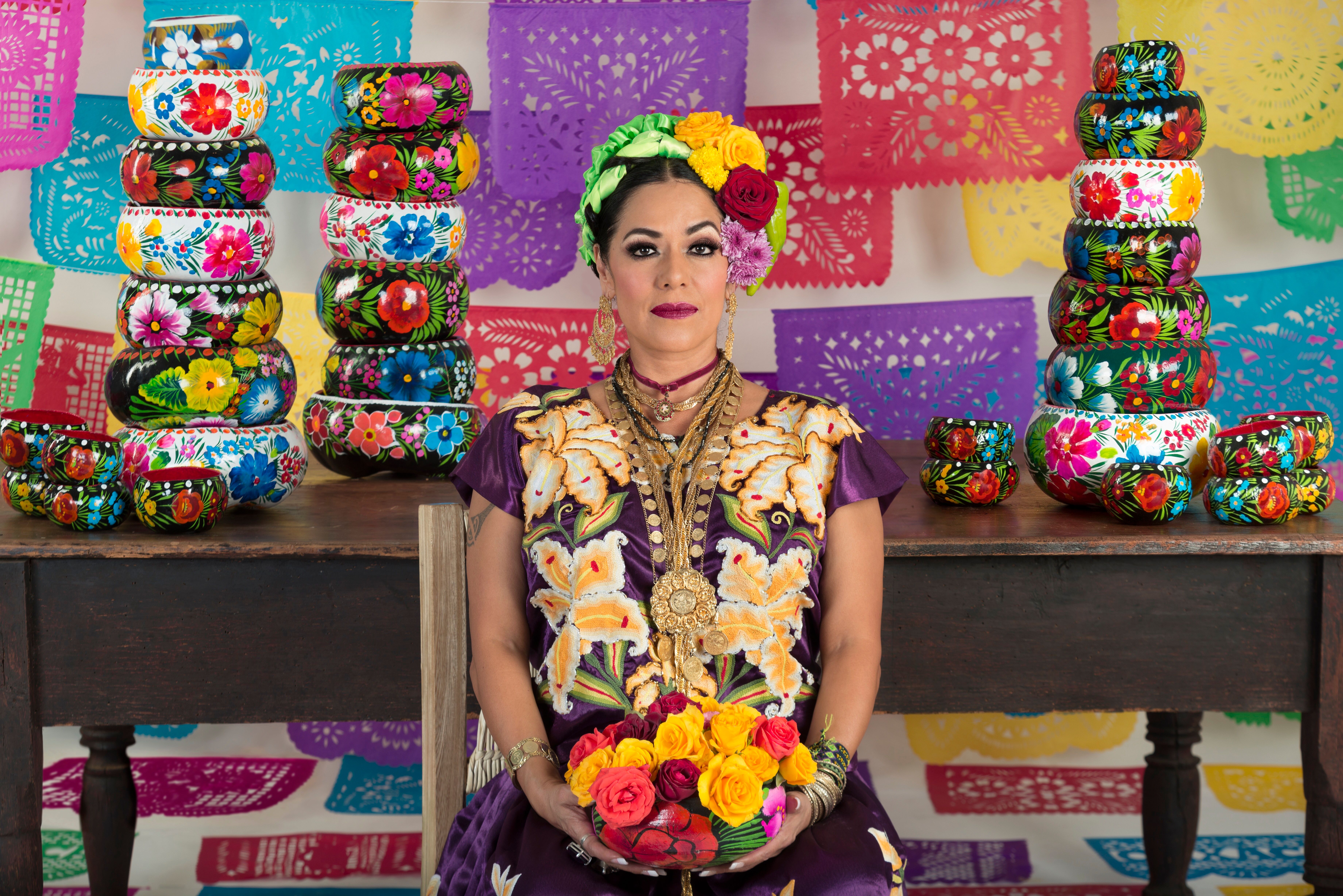Lila Downs opens her ninth album, Al Chile, with a swell of triumphant horns and brass instruments that announce the celebratory spirit of what’s about to follow. The first song is “Las Marmotas,” a high-octane riff on a cumbia beat that underscores the record’s tone of pride and jubilance, and the lyrics quickly establish that the Mexican-American singer is not going to let anything drag her mood down on this project.
“Podría ser muy cruel si quisiera. Yo podría ser un ejemplo de maldad,” she sings in her forceful, instantly recognizable contralto. “Pero soy un águila, veo desde lejos la falsedad.”
“Las Marmotas” centers on moving past feelings of revenge and vindication. As Downs sings about soaring above anger and injustice, the track becomes an enlightened moment of “when they go low, we go high.” But once that message has been delivered, Downs wants people to do more than just take the high road. She invites her listeners to break out and unleash the anxieties of a tumultuous political era, and she’s offered them a vehicle for that release with a swath of exuberant new songs. On Al Chile, she’s infused her traditional sound with live wire energy and light electronic flourishes, building a sonic entreaty that is flashier, more impulsive, and more experimental than her previous work.
Some of the album’s vitality is, undoubtedly, the mark of her surprise collaborator: Al Chile was produced by the globetrotting electro-renegade Camilo Lara of the Mexican Institute of Sound. The partnership seems an unlikely one at first glance, given Downs’ penchant for surfacing indigenous melodies and other ancestral heirlooms. However, Lara’s hand is light and well balanced. On songs such as Downs’ cover of Manu Chao’s “Clandestino,” he adds subtle dubbing and whooshing noise samples that enhance the sheer belting power of Downs’ voice. Touches like these introduce an edgy sheen to the material without losing the roots-minded verisimilitude that has become Downs’ signature.
“You know, you wonder about it, and you say, ‘What if it gets too trippy or it sounds too much like a remix or it loses the soul part of the music?’ ” Downs tells Remezcla. “But I think Camilo has been very careful about that. He kept asking me what I thought of everything, and he was so respectful. And I’m happy with the result—there are so many different worlds coming together and partaking on this.”
To put the album together, Lara and Downs embarked on a musical exploration in Mexico that Downs calls “anthropological.” They convened several bands and nearly 200 musicians from the country, and the roster gives Al Chile a surging live sound. Regional groups such as Banda Misteriosa de Oaxaca and La Sonora Tropicana appear on tracks like the folksy “La Campanera” and a rework of the Los Hijos Del Sol classic “Cariñito.” A cover of “La Llorona”—Downs’ second take on the folkloric tradition, this time sung in Zapoteco—enlists a Zapoteco children’s orchestra from the southern town of Juchitán.
Downs has often worked in, and advocated for, rural communities in Mexico, so she’s no stranger to pueblo heritage. However, Lara brought his own expert view of Mexican city culture, which merged ideas of “barrios” and “pueblos” on the album. One particular ritual they drew inspiration from was sonideros, the mobile sound systems that DJs for years have set up in working-class neighborhoods. The spirit of the sonidero is braided into Al Chile’s celebration of dance floor communion and joint harmony.
“The whole sonidero movement stems from community organizing and the invention of amplification, which in Latin America was a way for indigenous people to communicate and get together,” Downs explained. “Sonideros were playing songs that people constantly asked for, so in a sense, it’s about the pueblo and the community joining forces, and the people getting the music they want to dance to.”
Downs embraces sensory experiences heavily here and, in addition to dancing, there’s a tribute to taste (“I love to cook and listen to music at the same time, and combining the senses is definitely something that makes people come together,” she shared.) She’s woven a theme of Mexican chiles throughout the record, notably on an electric corrido called, “Son del Chile Frito.” She sings that “without chile, I don’t know how to live,” an allusion to the fact that periods of joy and pain coexist hand-in-hand, feeding into one another in a universal loop. There is revelry on the album, as well as constant reminders of the troubles that lurk nearby: “Clandestino” includes ad-libs that reference Trump’s zero-tolerance immigration policy that led to thousands of family separations at the border, and “Las Marmotas” was written after a famed music director was murdered in Mexico.
Those ranges of emotion—mixed with the euphoria of many of the songs—reveal the movement and spontaneity frothing in Al Chile. Both are qualities that help explain why she’s called this release “an album from the waist down.” She and Lara have managed to find peaks that are unbridled and reflexive and unforced.
“Sometimes art is amazing in a certain way because you can express a particular feeling or emotion, and you don’t have to go to the head,” Downs said. “You don’t have to analyze what the reasons are. The decisions are based mainly on what makes you feel right at the time.”
Al Chile is out now. Listen below, and check out Lila Down’s upcoming tour dates.




